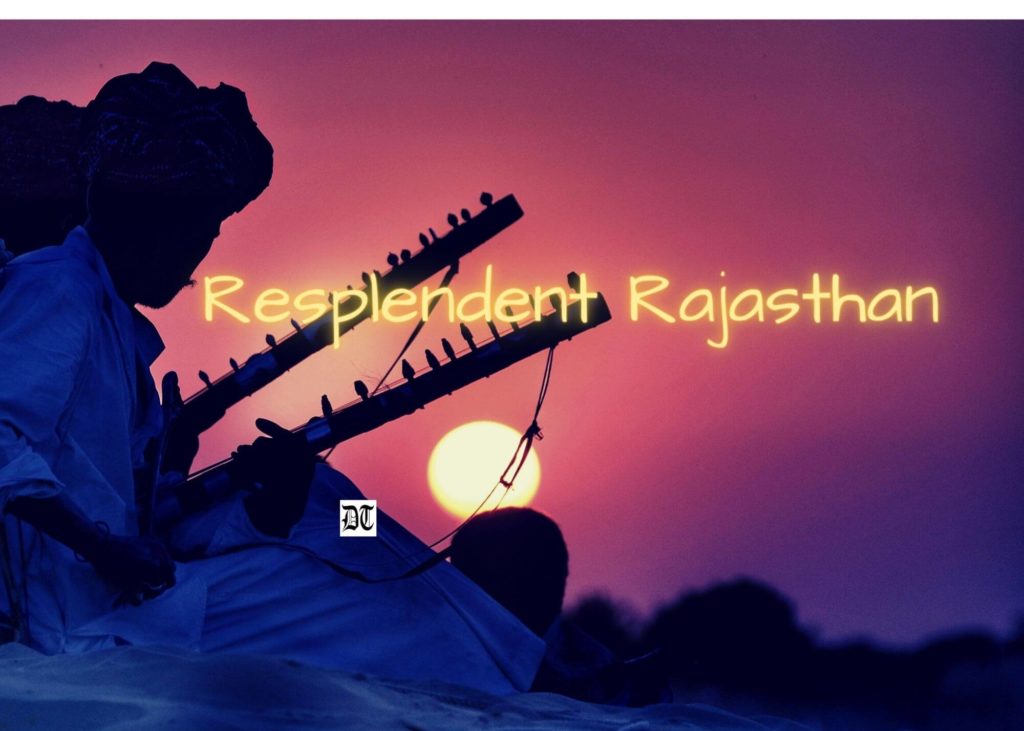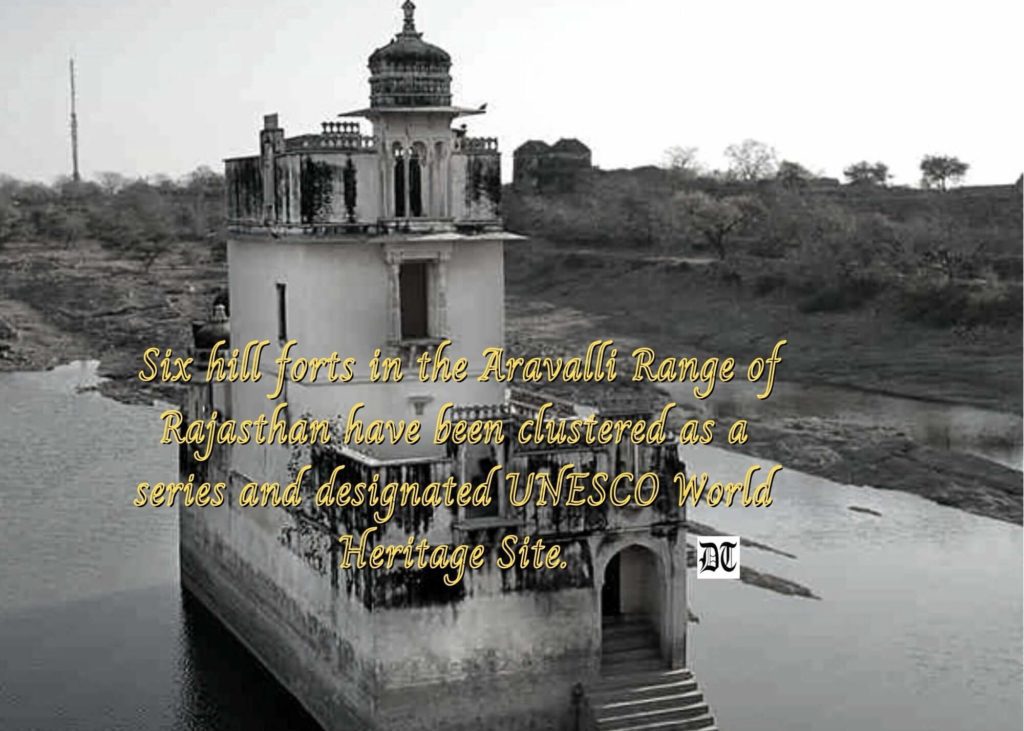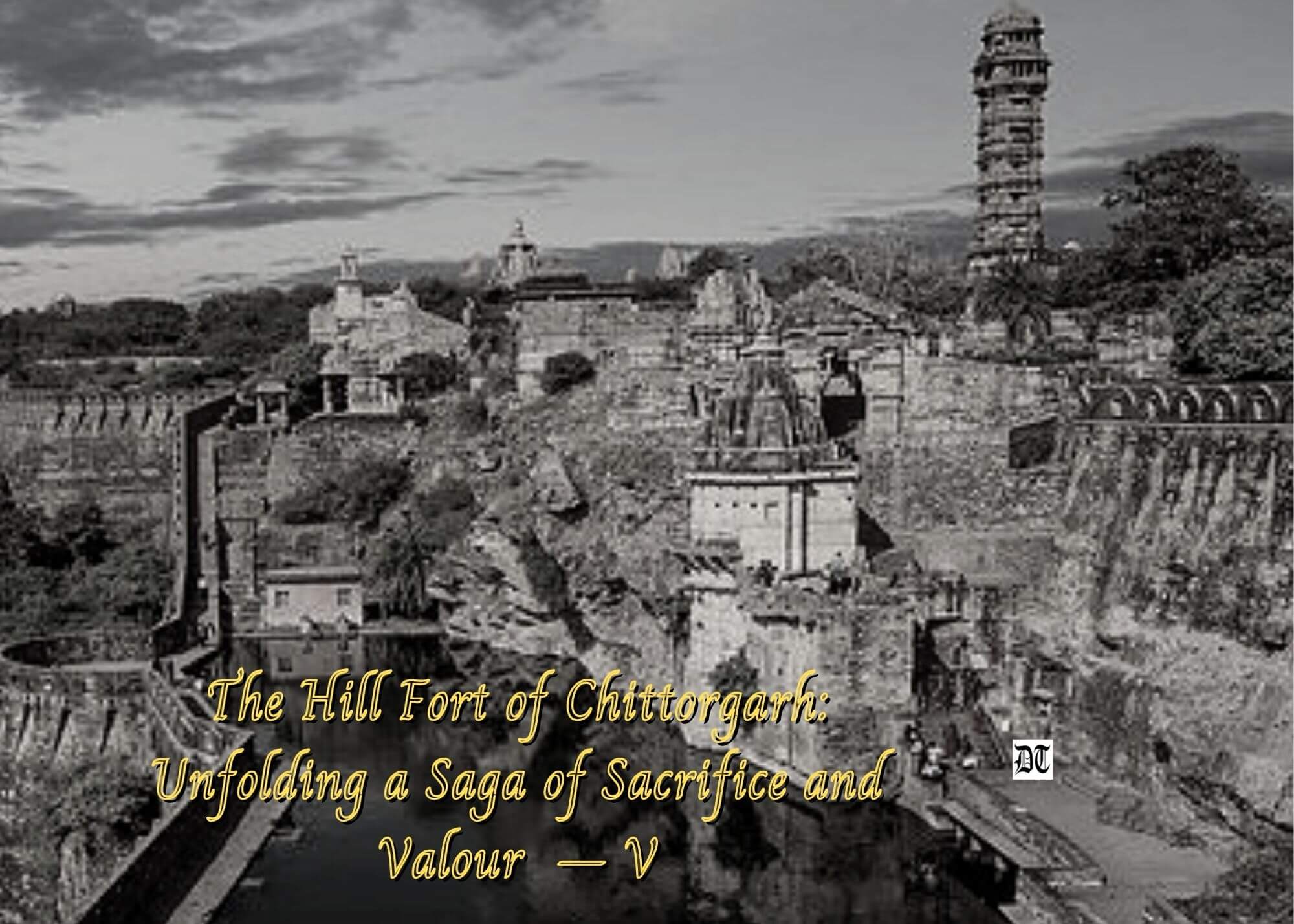Reading Time: 4 minutes
In the fifth part, Dr. Parneet and Dr. Kiran tell us about the six different kinds of forts. They profile the largest fort of Rajasthan, the Hill Fort of Chittorgarh. An exclusive for Different Truths.

Rajasthan, erstwhile Rajputana, ‘the land of Kings’ or ‘the land of the Princesses” holds a special place in the glorious history of India with its valorous tales of the valiant warriors like Maharana Pratap, Rana Sanga, Rana Kumbha, Samrat Prithviraj Chouhan along with the stories of the sacrifice of courageous women like the legendry queen of Mewar, Rani Padmini and the loyal nursemaid to Kunwar Udai Singh, Panna.
Forts of Rajasthan are the architectural manuscripts of chivalry and gallantry adorning every corner of the state. Forts like Ranthambhor, Chittorgrah, Taragrh, and Meharangarh tell tales on the range of the Aravalli Hills, a few massive water forts like that of Gagron on the banks of Ahu and Kalisindh rivers, and Bhansroadgarh Fort on the banks of Chambal and Bamani rivers, along with the famous desert fort, Sonargarh, Jaisalmer reflect the supremacy of the Rajput princely states that flourished in the region from the 8th to 18th centuries. These colossal forts were built not only to protect garrisons for defence but also to sage guard palaces, temples, trade centers and water harvesting structures. These forts are architectural manifestations of the martial strategies as well as the rich cultural traditions of the Rajput dynasties.
Forts of Rajasthan are the architectural manuscripts of chivalry and gallantry adorning every corner of the state.
It is interesting to note that a fort is called ‘Durg’ in Sanskrit, which seems to have originated from the word durgam, which means ‘difficult’. These forts are largely inaccessible architectural structures with their massive ramparts, strong parapets, and bastions. If we turn over the pages of history, we find that the ancient Indian texts talk about a variety of forts characterised by their topographical and architectural features. The Manu Smriti describes six categories of forts: “Dhanur-durg, Mahi-durg, Ab-durga, Varkshya-eva vaNra-durg, Giri-durg va Samashritya vaset puram.”
‘Dhanur-durg’ was a fort situated in a desert, ‘Mahi-durg’ a fort made of mud, ‘Ab-durg’ a fort surrounded by water on all sides; ‘Nra-durg’ was a fort that was protected by a chaturangini-sena or a four-fold army consisting of elephants, horses, chariots, and infantry, and finally the ‘Giri-durg’ or a fort situated on a top of a hill or a mountain.
Most of the forts in Rajasthan fall under the category of ‘Giri-durg’, also called ‘Parwat-durg’ that were… the best of all the categories.

Most of the forts in Rajasthan fall under the category of ‘Giri-durg’, also called ‘Parwat-durg’ that were, according to the ancient texts, the best of all the categories. Six hill forts in the Aravalli Range of Rajasthan have been clustered as a series and designated UNESCO World Heritage Site. These are- Chittor Fort at Chittorgarh, Kumbhalgarh Fort at Rajsamand, Ranthambore Fort at Sawai Madhopur, Gagron Fort at Jhalawar, Amer Fort at Jaipur, Jaisalmer Fort at Jaisalmer.
The Hill Fort of Chittorgarh, 500 feet above the plain, is the largest fort of Rajasthan. This spacious fort expands across over an area of 691.9 acres above the plains of the valley drained by the Berach River. Fish-shaped, the spacious fort has seven gateways namely the Padan Pol, Bhairon Pol, Hanuman Pol, Ganesh Pol, Jodla Pol, Laxman Pol, and the main gate named the Ram Pol (Lord Rama’s Gate). All the gateways to the fort have been built as massive stone structures with secure fortifications for military defence. The doors of the gates are armoured with pointed archs to keep away elephants and avoid direct cannon shots. The top of the gates has jagged parapets for archers to shoot at the enemy army. A circular road within the fort links all the gates and provides access to all the buildings in the fort complex. Currently, the walls of the fort enclose almost 65 historic structures, among that, include 4 palaces, 20 water bodies and 19 Hindu and Jain temples.
The historical documents and the archaeological records show that the fort of Chittorgarh was constructed by King Chitrangad of the Maurya dynasty…
The historical documents and the archaeological records show that the fort of Chittorgarh was constructed by King Chitrangad of the Maurya dynasty way back in the 7th century A.D. Later, the founder of Mewar dynasty the Guhila ruler Bappa Rawal is said to have captured the fort in either 728 CE or 734 CE. The fort of Chittor has a glorious past with three siege attempts, first in 1303 AD by Ala-ud-din Khilji, during the rule of Rana Ratan Singh, the second, in 1534, in the times of King Vikramaditya by the Sultan of Gujarat, Bahadur Shah and the third, in 1567-1568, when Mughal emperor Akbar attacked. In the absence of Rajah Udai Singh, the two Rajput warriors, Jaimal Rathore and Patta Sisodia sacrificed themselves to protect the fort. Another important event associated with these siege attempts is the act of jauhar committed by women. The first one was led by Rani Padmini and later by Rani Karnavati.
This is the fort where the world-famous Rani Padmini Palace is situated. This is the fort which has the grand complex of Kumbha Palace – the birthplace of King Udai Singh who established the city of Udaipur. It is significant for being the place where the devoted nurse-maid Panna Dai, caretaker of Udai Singh sacrificed her own son and successfully managed to take Prince Udai Singh to a safe place. Here only, the ardent devotee of Lord Krishna, Meera Bai – a Rajput princess, a saint-poetess, stayed. Besides the palace complexes, the place boasts of several other significant structures, such as the famous temples the Kumbha Shyam Temple, the Mira Bai Temple, the Adi Varah Temple, the Shringar Chauri Temple, and the two towers Kirti Stambh and Vijay Stambh.
Visual by Different Truths
Co-author

Dr. Kiran Deep is Associate Professor in English at Sri Ganganagar (Rajasthan). Her English translation of eminent Punjabi poet Surjit Patar’s poems has been published by Sahitya Akademi. Her publications include the research book, “Mapping the Creative Terrain: Revisiting George Eliot and Thomas Hardy”, along with several articles in literary journals of national and international repute.

















Valuable information on Forts specially Fort of Chittorgarh. Description of It’s history and architectural design are praiseworthy. Thanks to the duo writers.